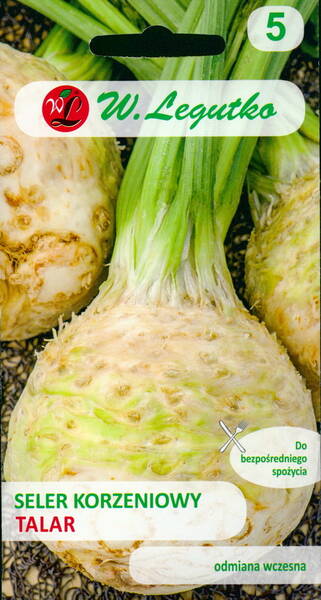Useful for men!
Early maturing variety. Juicy pulp with a nutty flavor is used as a stand-alone dish or as a delicious seasoning. It has a positive effect on the overall tone.
To achieve maximum size, they are grown through seedlings. Good timely watering is required, moderate temperature.
Weight per 1000 seeds = 0,3-0,5 g.
Number of seeds in 1,0 g = 1800-2500.
* Agricultural technology for growing root celery.
Celery occupies one of the first places among vegetables in terms of nutrient content and is one of the most valuable spicy-flavoring crops.
Eating celery helps remove salts and improves body tone. Root celery is bred for its root vegetables, which are characterized by high aromaticity and high sugar content, and contain mineral salts and essential oils. They are used as a seasoning in soups and salads, as well as in canning.
Root celery is very demanding on soil fertility and grows well in rich humus soils and low peat bogs, but does not tolerate acidic and swampy soils.
To obtain normal root crops, celery is grown as seedlings, since its seeds are very small, germinate slowly, and seedlings appear only on the 14-20th day after sowing.
When the first true leaf appears, the seedlings dive into the soil in a greenhouse or into pots with a nutrient mixture. When growing seedlings, the temperature must be maintained within +12+20°C.
Celery seedlings at the age of 60-80 days are planted in open ground, the planting period is the end of May - the beginning of June. It should have 5-6 leaves, a well-developed root system, and be squat and not elongated. When planting, the distance between plants in a row is 20 cm, between rows - 45 cm.
A very important point: planting depth; under no circumstances should you fill the upper buds of the plant. If the depth is greater, the plant will produce a small root crop.
Further care consists of regular watering, fertilizing and weeding. For feeding, complex mineral fertilizer NPK is used, enriched with microelements, providing the necessary nutrition throughout the growing season.
Celery is harvested at the end of September, in October, before the onset of frost. Place for storage in boxes with peat or sand.












